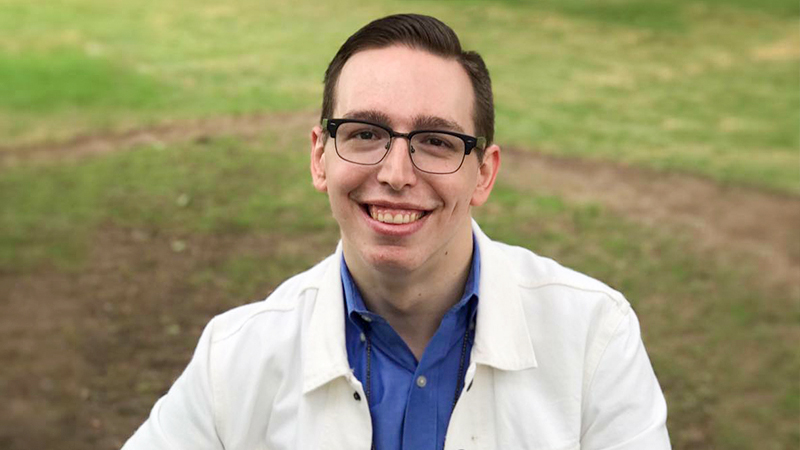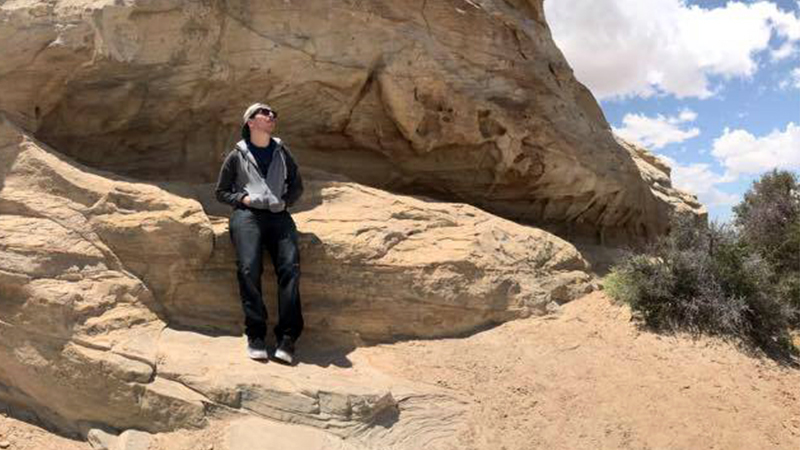Imagine you are 19 years old, in college, living with your best friends from high school. Your whole life is ahead of you. You should be enjoying it. Instead, you're suddenly suffering unimaginable anxiety.
That was me.
In 2008, I graduated with honors from Southlake Carroll High School in Dallas. After attending Tarrant County Community College, I transferred to the University of North Texas, where I majored in New Media Art, with a focus on video game design. In my spare time, I played World of Warcraft; the majority of my friends were online, which was fine with me.
In July 2009, as I was getting ready to enter my first semester at the University of North Texas, I started to feel really anxious. I began worrying about the little things: How was I going to get to class on time? How was I going to pay for textbooks? How was I going to find a job? Some of this made sense: Among other things, I'm not a great artist and my major required a lot of art classes. But the anxiety was so bad, I ended up staying awake for 10 days straight.
A Mystery Illness
I needed to know what was going on. I visited a psychiatrist, who diagnosed me with General Anxiety Disorder and put me on medication. The medication didn't make a difference, so I went to the emergency room, where another doctor gave me a CAT scan. He couldn't find anything wrong, so he prescribed a different medication, which also had no effect. Then I went to another psychiatrist.
A month passed, and I started to have new symptoms, including a loss of balance and a tendency to drool a lot. My new psychiatrist suggested I see a neurologist, who in turn requested an MRI. I had two, which showed evidence of prior strokes and new strokes. That brought me to the hospital for several days and still more tests. Along the way, we discovered that I was born with a hole in my heart, and it had never closed up.
By now, it's October 2009, and my doctor has come to a conclusion: He tells my mom that the symptoms suggest that I've been huffing paint. I hadn't, but my mom called my friends and asked straight out if I did drugs. Their answer was, “No way! Mason doesn't do drugs!"
Not giving up, my family did some research and found out that the best hospital for me was University of Texas hospital in Dallas. I was transferred there and spent four days in the intensive care unit before they ruled out strokes and determined my problem was neurological.
Eventually, one of the students at the hospital put it all together: I had Wilson's Disease. It's a rare genetic disease—only one in 30,000 people have it—so it's not something you normally get tested for. In fact, after I was diagnosed, over a hundred doctors came to see me!
People with Wilson's disease aren't able to process copper. Instead, the body stores it in the brain, liver, and kidneys, causing stroke-like symptoms, cirrhosis of the liver and other issues, including anxiety and depression.
In other words, all the weird, seemingly-unrelated symptoms I'd showed.
A Diagnosis—and a Difficult Treatment
Wilson's disease usually hits victims when they're between the ages of 13 and 19, and it usually starts with liver problems. In my case, it struck my brain first.
So now I had a diagnosis and a treatment plan. But before I could get better, the treatment was going to make me feel worse! I underwent chelation therapy, which binds the copper to a drug, allowing it to exit the bloodstream. Unfortunately, while it's leaving the body, the copper causes even more damage to the affected organs—including the brain.
For the next two years, I continued to decline, and even lost my ability to walk and talk. My mom continued doing research online and found a different drug that looked promising. That's when things started to change for the better. Today, I take zinc acetate to manage my disease and keep copper from being stored in my body.
My mom and dad were incredibly supportive through all of this. During my diagnosis, I had really high social anxiety and I pushed all my friends away. The only person I wanted to be around was my mom; she was a huge support system for me. Once my treatment was complete, all the anxiety and depression disappeared.





